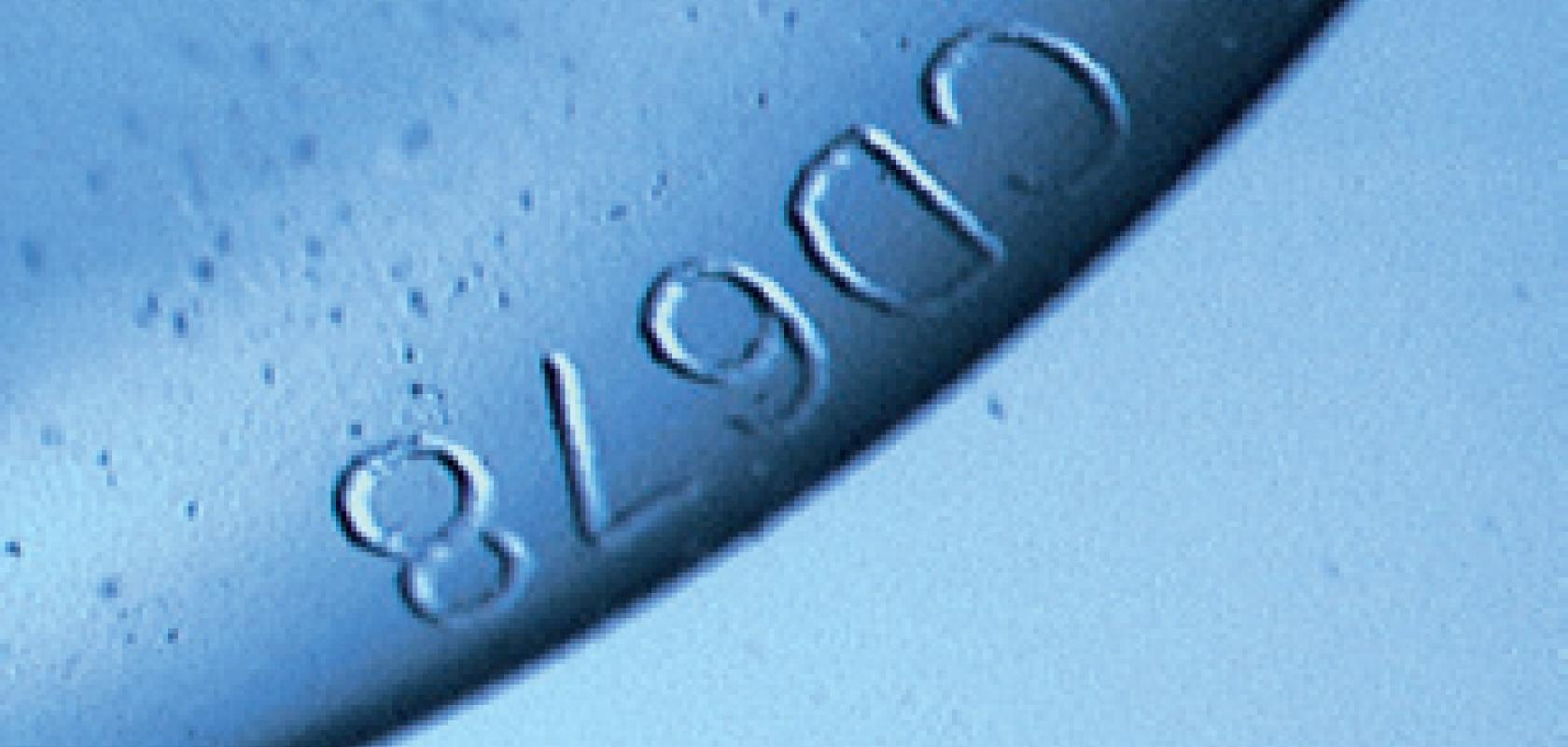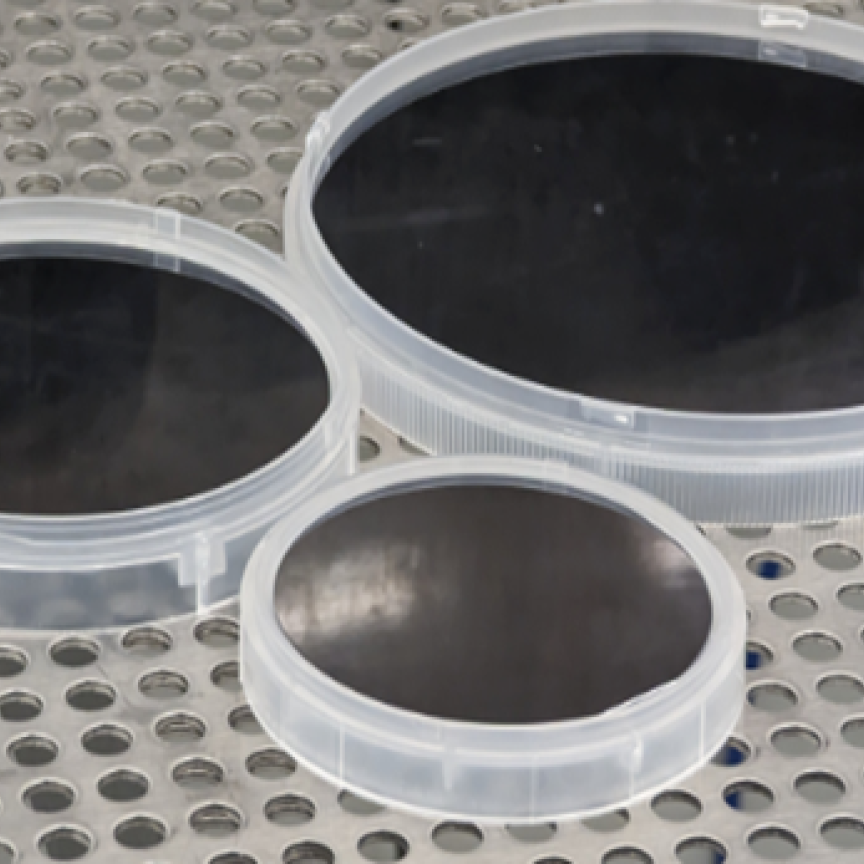Marking is a word whose simplicity belies the increasing myriad of laser types and applications that making a mark on an object really encompasses. From excimer lasers to CO2 and solid state, from mobile phone cases to anodised aluminium, marking can create black on silver patterns or white on black.
‘We are more precision marking, which you can barely see with your eye, and you don’t want to see it mostly. For this you want short wavelengths,’ says Ralph Delmdahl, product marketing manager for Coherent. His company provides excimer lasers that are used for transparent hard materials such as diamond, glass and some polymers. They operate at 193nm with 10mJ pulses to avoid creating cracks in the glass and mark, among other things, ophthalmic lenses made of mineral glass and polymers. The marking will encode information for the optician such as the lens’ astigmatic power, its overall characteristics, to identify what prescription the lens is for. The mark might be on the side or edge of the lens and the intention is that the user can’t see it. Because polymer lenses have several coatings to make them hard and provide an anti-reflection quality, the markings can record what coatings the lens had.
Another application for excimer marking lasers, where details about the lased object can be recorded on its surface, is the diamond industry. Again the 193nm wavelength is used because diamond only absorbs below 200nm. Above this wavelength more energy is needed and that would heat up the diamond and potentially induce cracking. As well as details about the diamond sometimes people like to have their names or the reason for the diamond’s purchase to be inscribed on the side of the jewel. As well as this personalisation of the diamond, branding by a company can also be carried out. Or a company may want marks for security and anti-counterfeiting purposes. ‘You can induce carbonisation to create a blacker mark,’ explains Delmdahl.
Counterfeit parts are a problem the aerospace industry has been tacking for a number of years. A comprehensive traceability of products becomes more and more important for manufacturers in various branches of industry, because nowadays the piracy of products poses a serious problem for worldwide operating enterprises. Components are marked by conventional laser systems or by needle stamping. However, the markings of both techniques can be easily copied by the use of suitable equipment. The economic damage caused by product piracy amounts to about 30 billion Euros every year and taking Germany as an example, 10,000 people lose their jobs every year due to it. A technology that will help to fight this is now reaching the market, in the form of forgery-proof laser-holography identification marking, according to its developer 3D Micromac. The result of a two-year project called Perfekt, Yves Rausch, 3D Micromac’s head of laser applications, said: ‘It is called holographic because it has lots of colours like a rainbow. The code itself is the pattern. The reader looks like a bar code reader. Inside is a special laser that hits the patterns and you get a special reflective pattern, which gives you the code.’
The reflective pattern is a characteristic interference pattern, which is marked on the aerospace part with cuts no deeper than 200nm using an ultra-short-pulse laser. A combination of the laser and different diffractive optical elements (DOEs), which shape the laser beam, create the pattern. ‘The cuts go down to 200nm and no deeper. Aerospace wants marking in the area of nanometres because any deeper and you can damage the part. We’ve just started marketing the new technology,’ explains Rausch. By rotation and movement of the DOEs, the interference pattern changes and individual, unique patterns can be created. This marking is covered with a transparent coating and the marking’s codes can be deciphered using a mobile reading device. Rausch adds that this laser-holographical marking is resistant to reverse engineering because it is not possible to determine the kind of DOEs used or their position to each other by reading the pattern. The wavelength and power levels the ultra-short-pulse laser uses are also a closely guarded secret.
The two-year project involved companies that developed the mobile reading device’s camera and the algorithm for reading the code. Local academics were also involved and some local government funding supported the work. Following this work that was focused on marking metal, silicon has been marked and Rausch expects that it will be possible to apply the technology to glass and ceramics in future. However, for ceramics and glass you need more energy and if the power is raised, precision can decrease and precision is needed to create the holographic patterns.
Traceability codes are not the only permanent marking that is becoming commonplace; consumer products increasingly require complex decorative marks, such as corporate logos. ‘Consumer goods are becoming a significant product group in the use of marking. For goods such as mobile phones and cameras, customers often want complex and visually aesthetic marks,’ commented SPI Lasers product line manager for pulsed lasers, Jack Gabzdyl. The laser systems used to create these decorative markings have to be extremely reliable. These products are manufactured in millions of units per month, so today’s contract manufacturers can have factories with hundreds or thousands of laser marking stations to meet demand. Factories in China can be the size of a European town and, as Gabzdyl explains, it is unlikely that the number of stations is going to be reduced. ‘It is difficult to speed up production without adding more marking stations; just increasing the power doesn’t necessarily scale it up. Some materials can be delicate or difficult to mark and, with manufacturers needing a consistency in mark quality, they need reliable and consistent laser sources.’
In some instances, marking of consumer products becomes more surface texturing and patterning, where relatively large areas need to be processed. In a case like this, the beam quality can have a significant impact on the quality of mark achieved; a high beam quality produces an intense central peak, whereas in higher moded beams the energy is more evenly distributed.
Whether for patterning or for smaller marks, good control of pulse characteristics is needed, and some applications benefit from shorter pulses, ensuring that the materials being processed are not damaged. But sometimes darker effects are needed, according to Gabzdyl. There are times when customers want black marks on stainless steel, which is achieved through careful surface oxidation with no melting. This is controlled oxidation and the process can benefit from an entirely different shape of pulse and/or beam quality. An oxide can be added to improve oxidation, melting the oxide material in, to create a dark mark. But this also requires more power. Another common marking process is anodised aluminium. Anodised means that the base aluminium is covered in an oxide layer that is often coloured. Marking this normally involves removing a small amount of this layer of colour to produce a mark on the aluminium beneath.
Not as power hungry but requiring great precision is the process to create white marks. This requires a small grouping of dots that reflect light in such a way that the human eye perceives it as a white mark. ‘This needs very good quality beams to produce the dots so the mark appears white from any angle,’ adds Gabzdyl.
Mass production, reliable, cost effective, marking with lasers has all the characteristics of any important process necessary for production. Marking might only be skin deep compared to engraving and cutting but it provides a product feature important to manufacturer and user, brand recognition and a quality feel.


